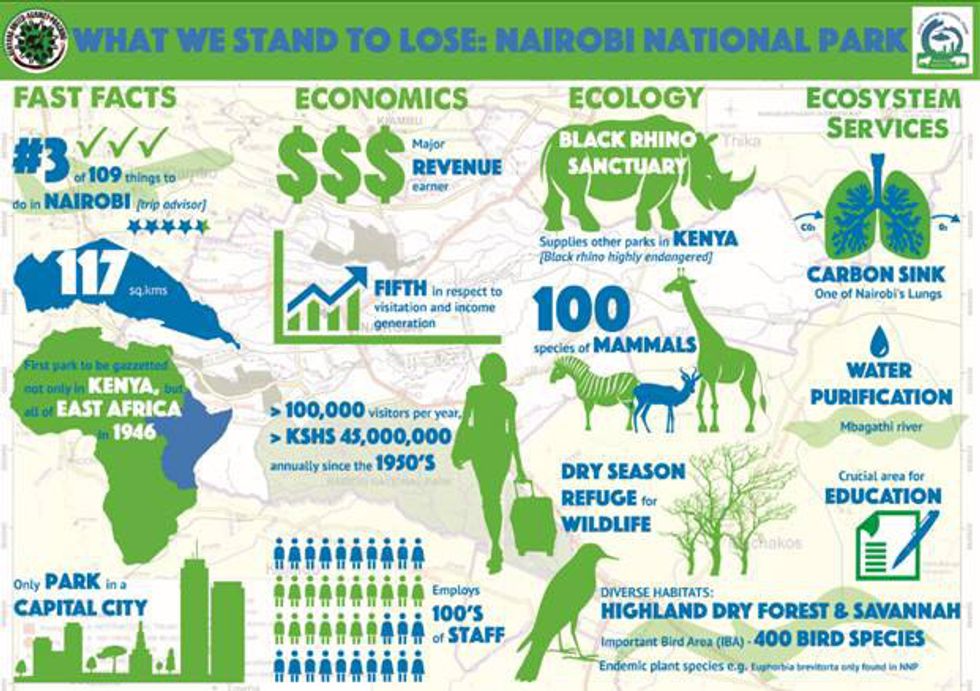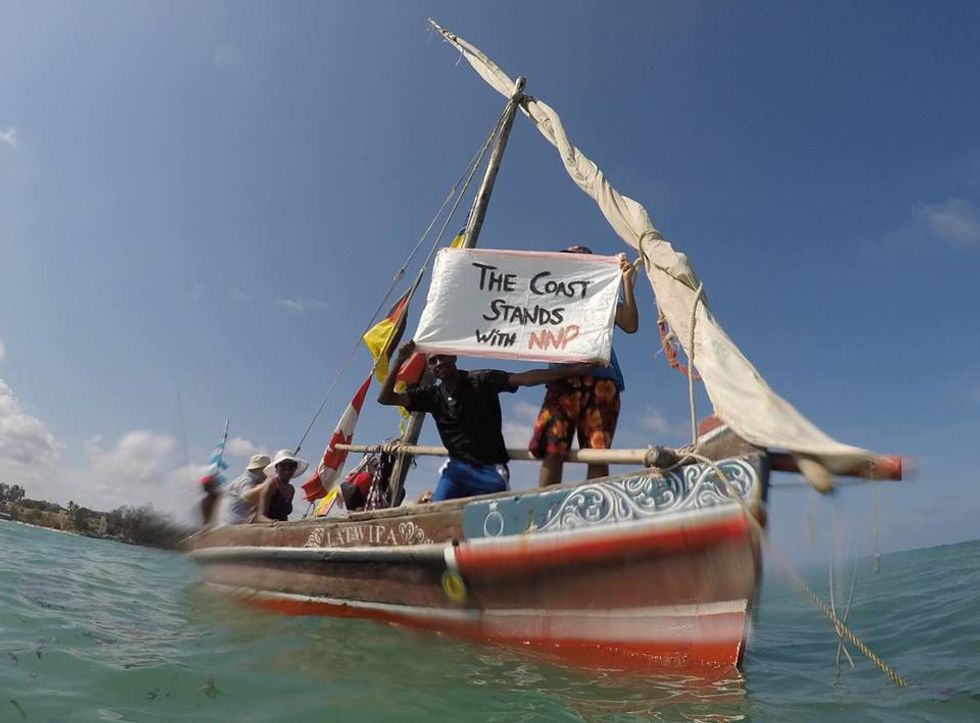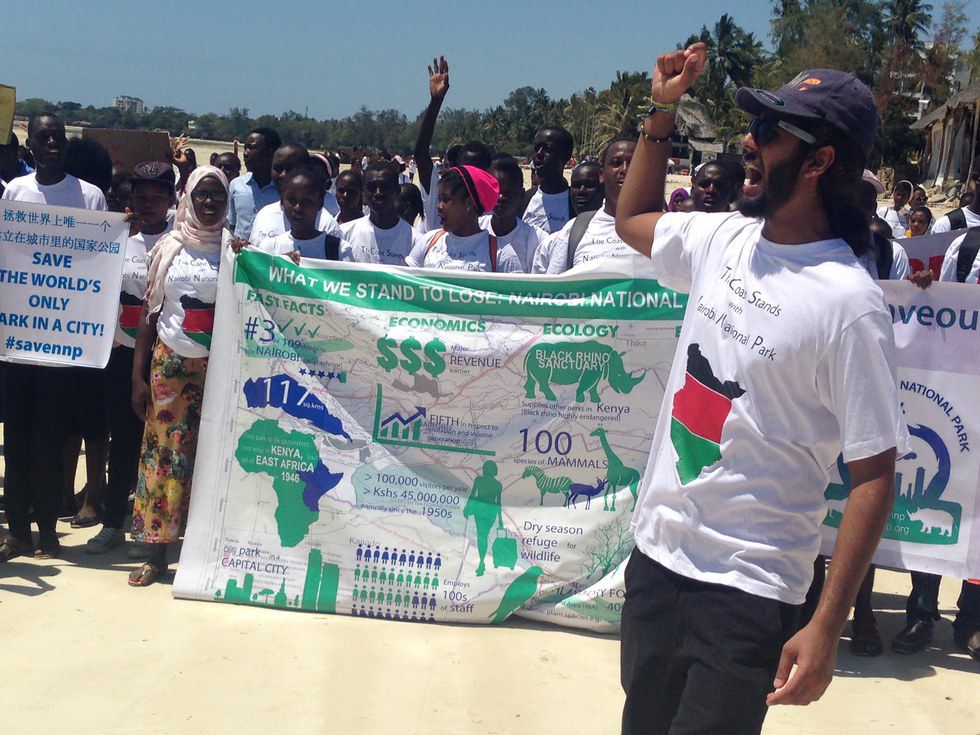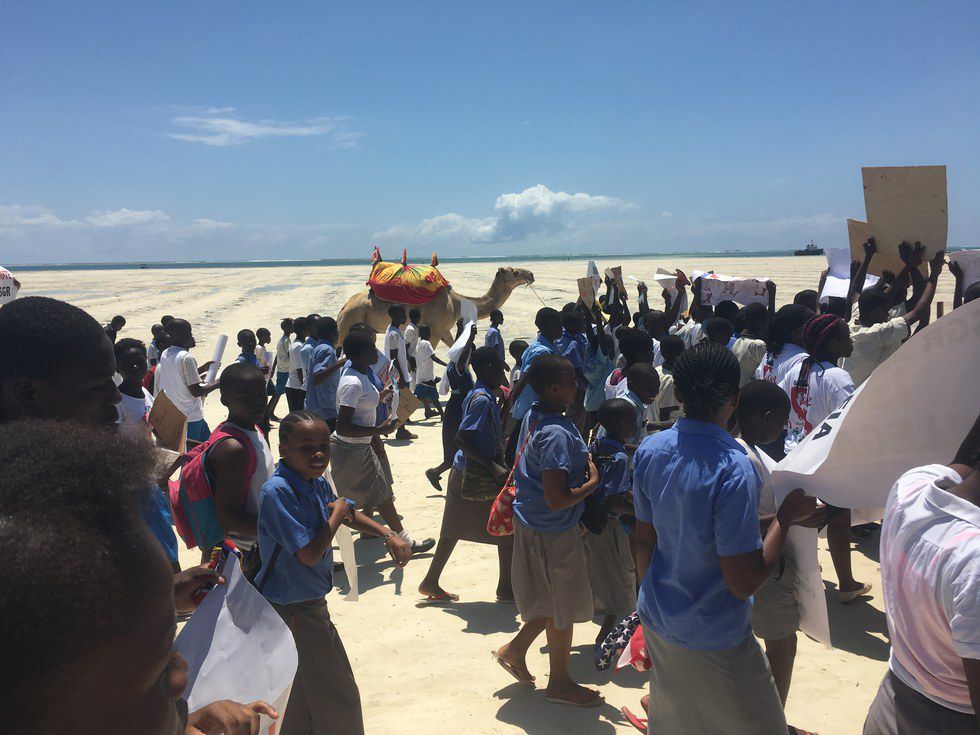Nairobi National Park is a beautiful refuge from the hustle and bustle that normally is Nairobi. If you’ve ever had the desire to go on safari with a city scape in the background, Nairobi National Park is the only place to do it. The park is the definition of a tourist destination, and it has had a place in Kenya’s heart since 1946. There’s a threat looming over Nairobi’s beloved park and people all around Kenya are rallying to save their heritage, and their park.
The Standard Gauge Railway is being built to carry cargo and passengers from Kenya’s capital, Nairobi, to the coast in Mombasa. While the new railway is exciting and necessary, building phase two of the railway is causing headaches for conservationists and activists all over. Phase two calls for routing the railway straight through Nairobi National Park which would put an end to the park completely. Construction of the SGR would push out any wildlife, leaving them without homes, and disrupt the entire eco system housed in Nairobi’s city center.
Supporters of the Standard Gauge Railway claim that ripping through the park as opposed to going around the park is a cheaper option. While that may be true, for the time being, the government isn’t really looking at long term loss when it comes to the desolation of Nairobi National Park. Like most countries, Kenya makes a lot of money form tourism. The problem is, since the post election violence in early 2008, tourism in Kenya has dropped and hasn’t really been able to recover since. Tourists drop guap on the true “African” experience. Kenya is home to all of that wildlife you saw in your favorite Disney movie, “The Lion King”, and on top of that the sunny beaches on the coast provide a vacation spot any beach lover would find hard to turn down. Before it was deemed “dangerous” to be here, Kenya was a popping tourist destination. I mean, who doesn’t dream of an African safari? Nairobi National Park is THE tourist attraction in Nairobi, and without tourist attractions where will the tourists go? Somewhere else. Perhaps Tanzania. I’ve heard it’s nice there. It may be cheaper, in theory, to rip apart Nairobi’s biggest tourist attraction, but Kenya can’t really profit off of Tanzania’s tourism revenue in the long run.
People all over Kenya are rallying for the re-routing of the Standard Gauge Railway. Just this past Saturday, October 29th, the coast of Kenya showed their support and marched in solidarity with Nairobi National Park. The communities of Mombasa, Diani, Kilifi, and Malindi showed up to let the Kenyan government know that no matter where they are in Kenya, they still care about their parks. At all four locations, there was at least one dhow, traditional sail boats, on site. Whether they were sailing, or just in the background while protestors marched, their presence was a symbol of solidarity. Dhows are traditionally used on the coast in the Indian Ocean. By having the dhows at each location, it allowed protestors from the coast show that they stood with the Nairobi community.
I had the privilege of attending the march in Mombasa on the public beach in Mombasa. After getting people registered, there was a short media break, and then off we went. There’s something incredibly powerful about three hundred plus people chanting to save their park. The big chant was “Haki yetu. Wanyama wetu.” which translates to “Our heritage. Our animals.” Two phrases that packed so much power, because that is what Nairobi has to lose if phase two of the standard gauge railway isn’t re-routed.
Some of the people participating in the march were veteran animal rights activists and budding conservationists. However, a solid chunk of the crowd was made up of the community, specifically school children. It’s important to get the community involved and give them a voice on matters dealing with their heritage. It’s also critically important to get children involved. Sure, they may not get a whole lot out of it other than free biscuits and water, but in the long run it does wonders. Showing kids from an early age that it’s important to stand up for what matters, and that they do indeed have a voice. Showing them this from a young age allows them to grow up and be strong advocates that care about what’s happening in their lives.
This isn’t just about Nairobi National Park. This is about everyone who cares enough about saving the park. Four communities gathered together to show solidarity with their Nairobian brothers and sisters. This is about saving a heritage that is rampaged by westerners more and more every day. This is about the fight to do things the right way. As one of the organizers Mishal Gudka put it in the closing remarks “while the standard gauge railway is essential, it is not essential for it to go through Nairobi National Park.” Okay, so maybe it is a little bit about Nairobi National Park too.
To keep yourself updated on the movement to save Nairobi National Park follow these Facebook pages: Save Nairobi National Park Campaign ,Friends of Nairobi National Park, The Coast in Solidarity With Nairobi National Park, and KUAPO (Kenyans United Against Poaching)











 mr and mrs potato head
StableDiffusion
mr and mrs potato head
StableDiffusion










